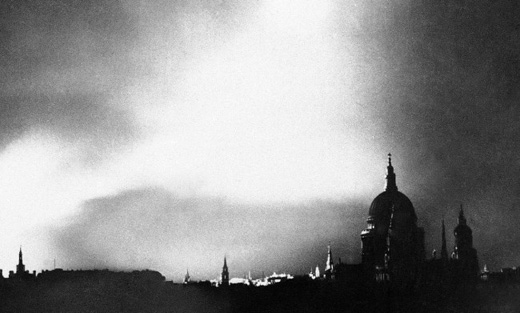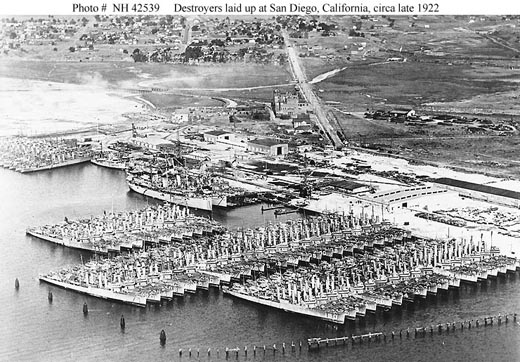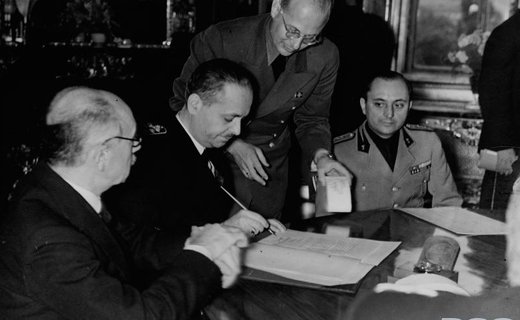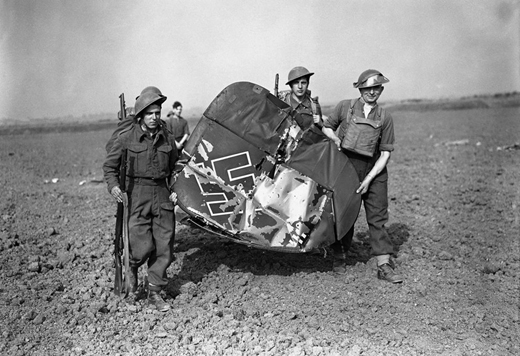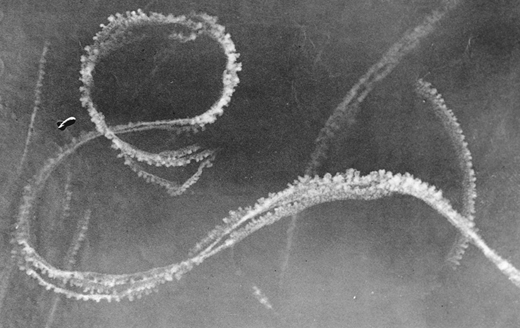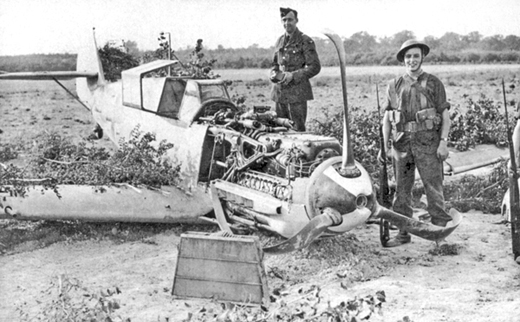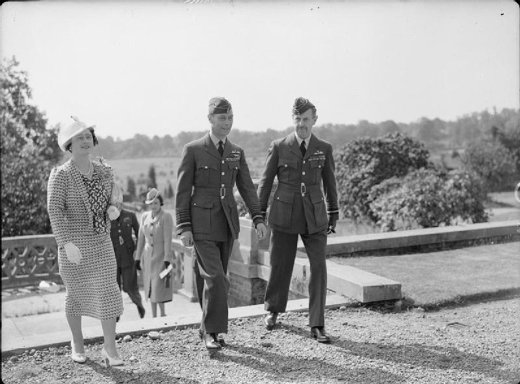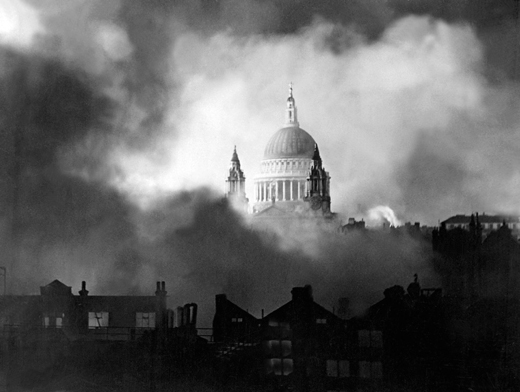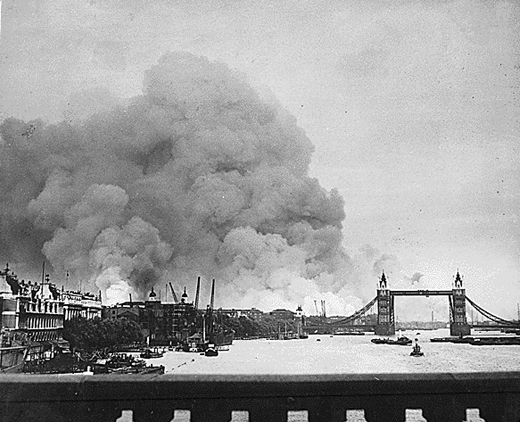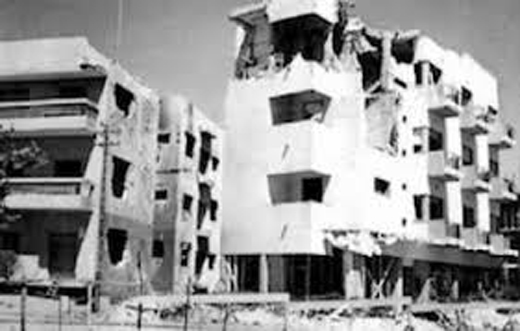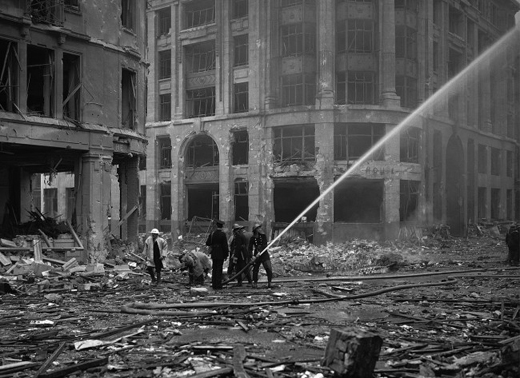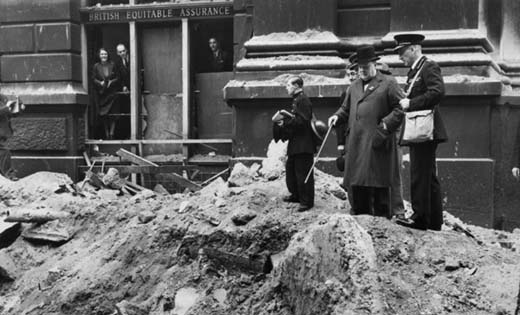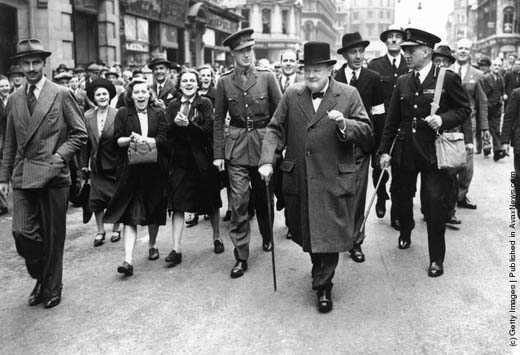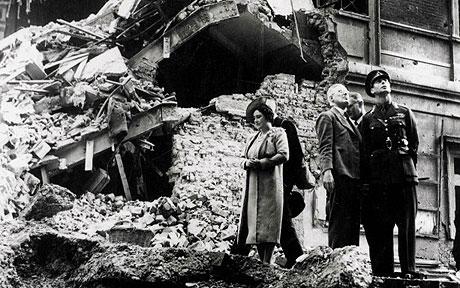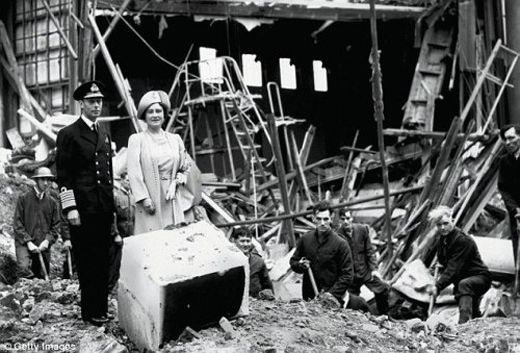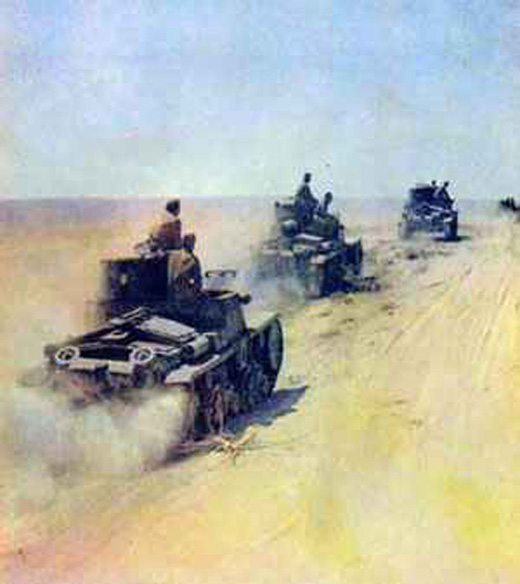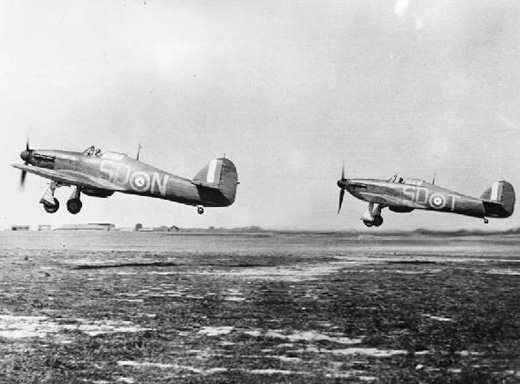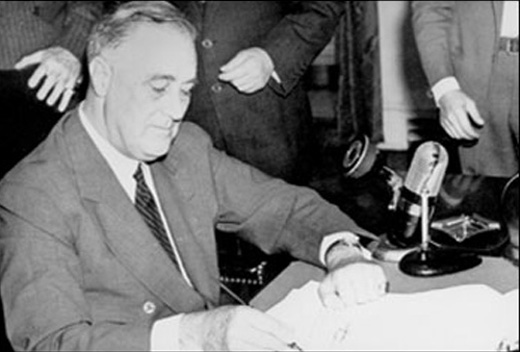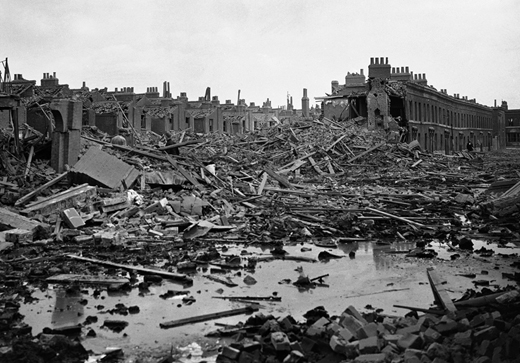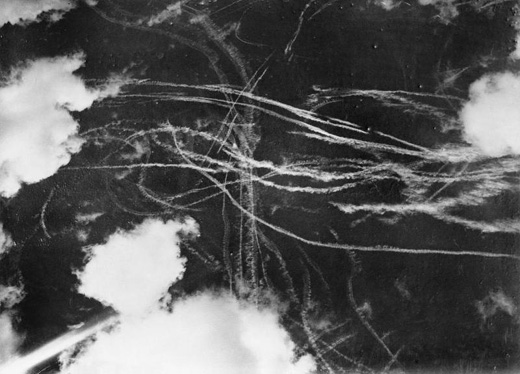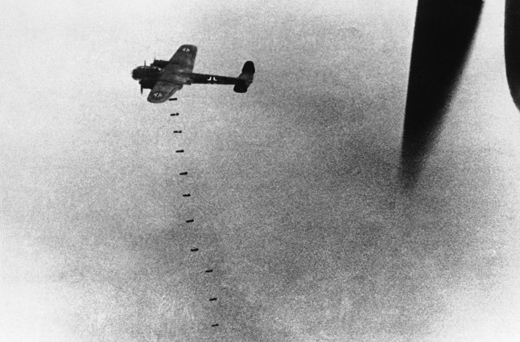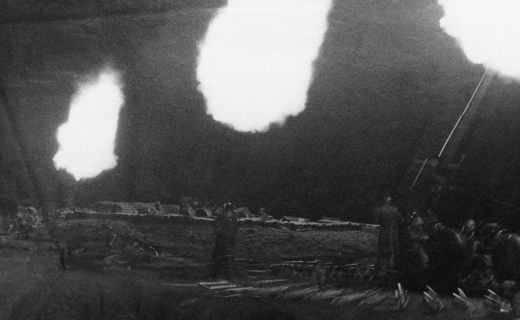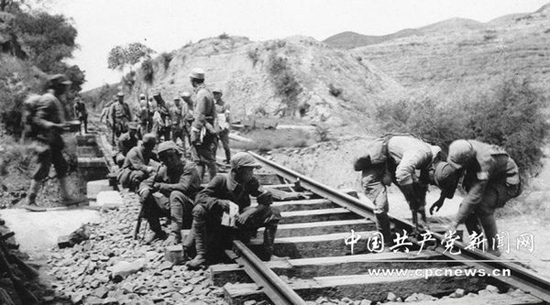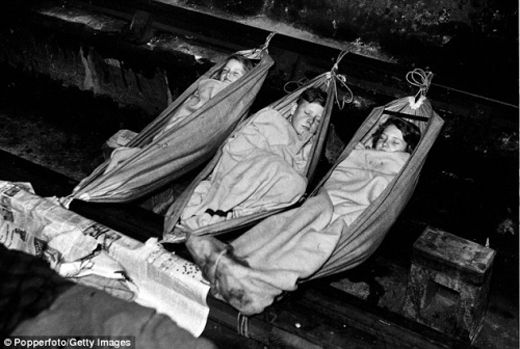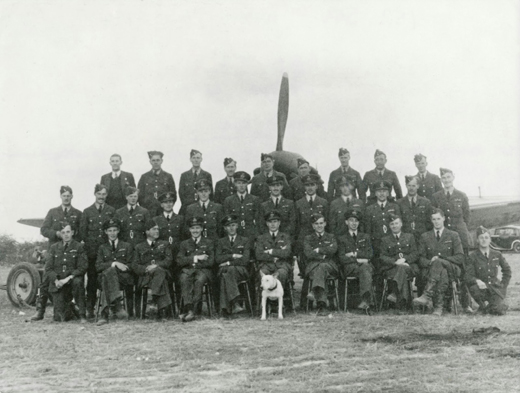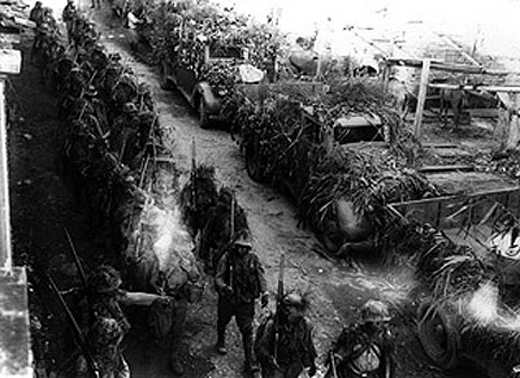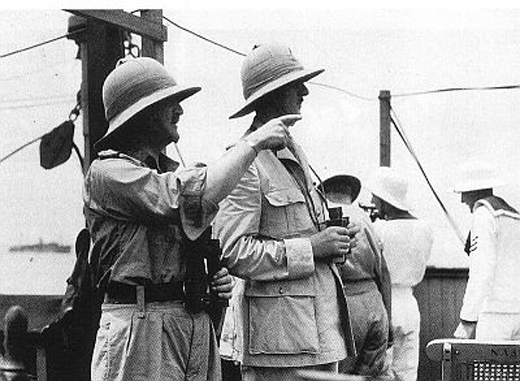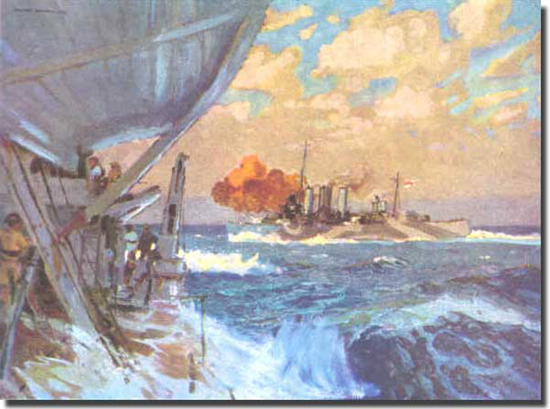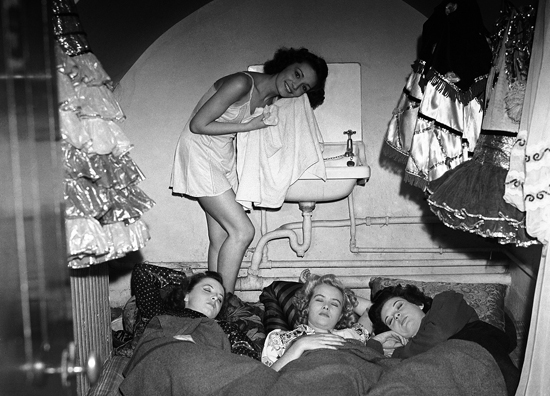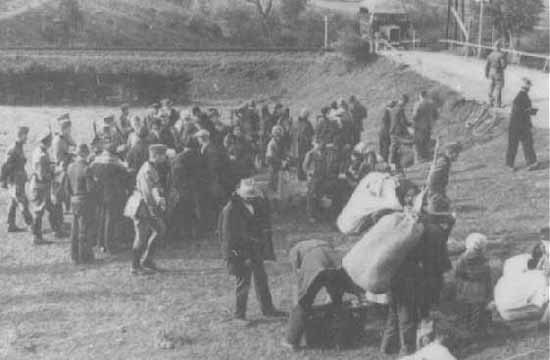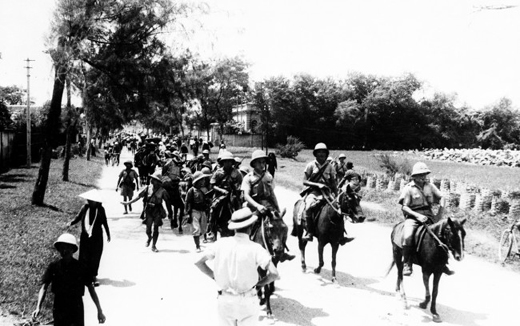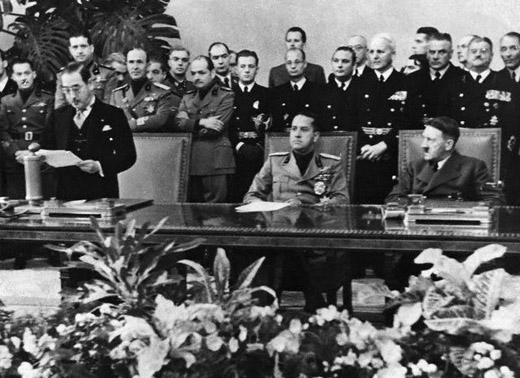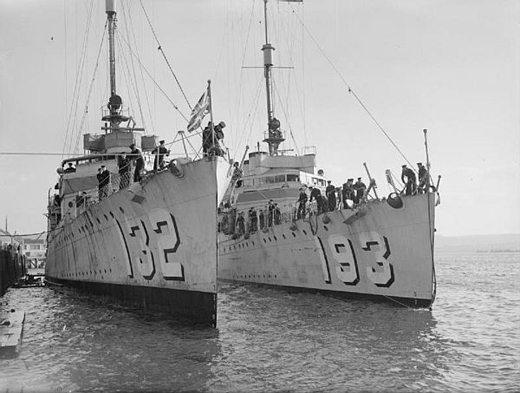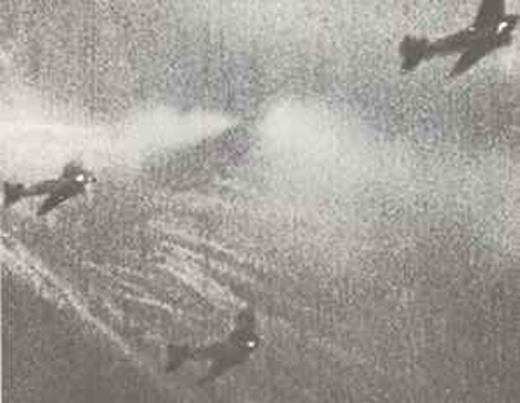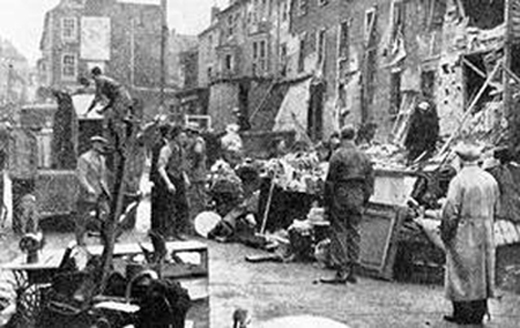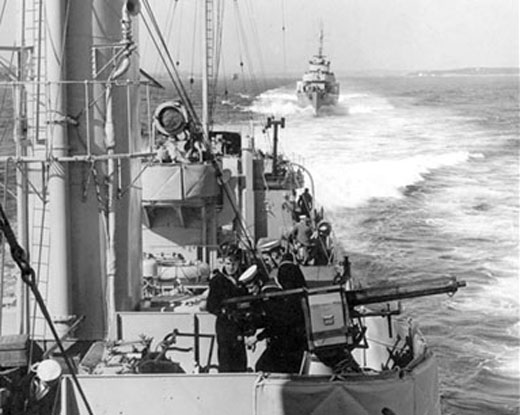Battle of BritainDay 68 Weather - Fair with some cloud and becoming fine during the evening.
Combat - This Sunday becomes known as 'Battle of Britain Day' as the events that unfold will dictate the final outcome of the battle itself.
The morning starts quietly with only a few reconnaissance aircraft detected by the radar stations until about 1100hrs, when a build up of enemy aircraft is reported. Fighter Command orders all available squadrons to readiness and scrambles several others to patrol the coastal areas.
The raid, consisting of about 100 Do-17's and followed by a large escort of Me-109's, crosses the Kent coast at 1130hrs and heads towards London. As they near their target they are attacked by two large formations of Hurricanes and Spitfires. The first to attack the bombers is the Duxford wing, led by Sqd-Ldr Douglas Bader. Hurricanes of No. 242, 302 (Polish) and 310 (Czech) Squadrons and Spitfires of No. 19 and 611 Squadrons dive into the bombers, who by now have lost their fighter escorts. As massive air battles are developing a second attack is made by Hurricanes of No. 1 (Canadian), 73, 229, 303, 501, 504 and 605 Squadrons and Spitfires of No. 41 and 609 Squadrons.
A Flight of Dornier Do-17s of KG76
|
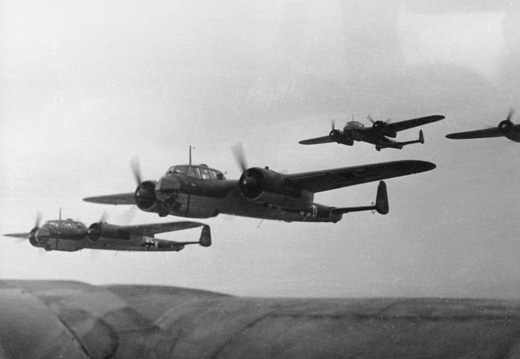 |
|
|
One particular pilot engages several Do-17's over London during the action, which is to be immortalized in the movie 'The Battle of Britain'. He was Sgt. Raymond Holmes flying a Hurricane of No. 504 Squadron from Kenley. Sgt. Holmes has attacked one Do-17 over central London that is suspected of bombing Buckingham
Palace. The close combat and the Do-17 exploding seriously damaged the Hurricane forcing Sgt. Holmes to bale out and subsequently lands in a dustbin (in the movie, he lands in a greenhouse). The Do-17, in flames and breaking up, lands into Victoria train station.
As tired pilots of Fighter Command land to refuel, rearm and take a brief rest after the morning's combat, another raid is detected approaching the coast just before 1400hrs. Over 150 He-111's, Ju-88's and Do-17's, escorted by two large Me-109 formations, head directly for London. The Me-109's, of JG26 led by Adolf Galland and of JG54 led by Hannes Trautloft, engage the R.A.F. fighters over Kent and south London before they have to return low on fuel. This allows the bombers to make their target and drop bombs on London from the docks to the West End.
However, the bombers are now vulnerable and subsequently find themselves attacked head on by the Duxford Wing of five squadrons. In panic, many bomber crews split from formation, dump their bombs and turn for home only to be met by more R.A.F. fighters. By 1500hrs one of the largest aerial battles ever seen is in
progress over London and the surrounding counties down to the south coast and over the Channel. It involves Hurricanes of No. 1, 17, 229, 238, 242, 253, 257, 302, 303, 310, 501, 504, 605 and 607 Squadrons and Spitfires of No. 19, 41, 66, 72, 92, 602, 603 and 611 Squadrons.
|
A Crashed Dornier
|
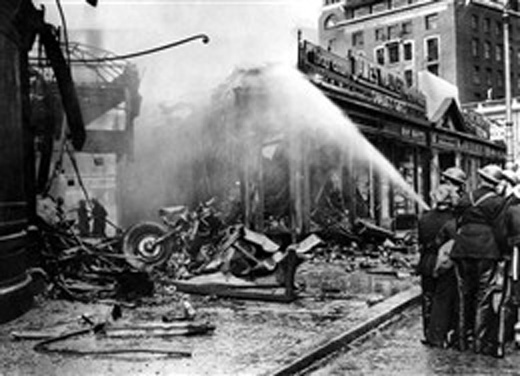 |
|
|
Meanwhile, a raid by He-111's attacks and bombs Southampton and Portland at about 1530hrs before interception is made by Spitfires of No. 152 Squadron, scrambled from Warmwell.
At 1700hrs Middle Wallop and Tangmere stations raise another raid alert as Me-110's sweep towards the Isle of Wight and Southampton. The Hurricanes of No. 607 Squadron are scrambled from Tangmere to intercept as the Spitfire producing factory at Wollston is attacked.
By 1800hrs, the skies are clear of aircraft and unbeknown to the British people the German High Command are considering suspending their invasion plans. It is clear to all Luftwaffe aircrews on this day that R.A.F. Fighter Command is far from being a spent force and without air superiority the invasion can not proceed.
During the night the main raids are centered on London with others on Liverpool, the Midlands, South Wales and Bristol.
Kesselring makes another great effort against London. He plans two main raids but they cannot be timed to catch the R.A.F. fighters refueling because his strength is sufficiently reduced that he must send the same fighters on both occasions. He can muster about 400 fighters but less than 200 bombers in the morning attack. The fighting is very heavy with the Germans being harried all the way to London, then being heavily engaged over London and all the way back to the coast. The bombers are not able to drop their loads with any accuracy at all. The afternoon shows a similar story but the fighter battles are more intense and the bombers bomb nearer to their targets as a consequence. The destruction by the bombers this day is catastrophic, but no essential war targets are hit. Other Luftwaffe targets are the seaplane installations in Southampton, but heavy anti-aircraft fire prevents much real damage.
During the night Bristol, Cardiff, Liverpool and Manchester are attacked. A 1000-kg delayed-action bomb is removed from a deep crater near St Paul's Cathedral and is exploded on the Hackney Marshes. Although the fighter combats have gone about equally the German bomber losses are very severe, bringing the German loss for the day to 60 aircraft for a bag of 26 from the R.A.F.. Many more German bombers have been damaged or have crewmen dead or wounded. Their morale suffers as they meet up to 300 R.A.F. fighters in one raid after their leaders have told them that the R.A.F. as a whole has less than this number. Although it is not apparent at the time or for several weeks afterward, this is the last real attempt by the Luftwaffe to destroy the resistance of Fighter Command. The day by which Göring had hoped to eliminate the R.A.F. has ended in another British victory. This day becomes known as 'Battle of Britain Day'.
|
R.A.F. Losses: 36 aircraft damaged or destroyed, 10 pilots killed or missing and 13 wounded.
Luftwaffe Losses: 79 aircraft damaged or destroyed, 142 pilots and aircrew killed or missing and 29 wounded.
NOTE: Losses include non-combat patrols and accidents.
[  | |   ] ]
Battle of the Atlantic - U-48 attacks convoy SC-3 sinking the escort the British sloop Dundee, the British steamer Empire Volunteer (5319t), the Greek steamer Alexandros (4343t) and the British steamer Kenordoc (1780t) about 65 miles west of Rockall. 12 are lost from the Dundee. Her survivors are picked up by the British destroyer Wanderer and the Norwegian steamers Fido, Vigsnes and Hild. 6 crewmen are lost from the Empire Volunteer and 5 from the Alexandros. 33 survivors from the Empire Volunteer and 25 survivors from the Alexandros are picked up by the Wanderer. 7 are lost from the Kenordoc with 13 survivors being picked up by the British destroyer Amazon and the Canadian destroyer St Laurent.
- U-65 sinks the Norwegian steamer Hird (4950t) 90 miles west of Rockall. The entire crew is rescued.
- German bombing sinks the British steamer Hallard (1264t) 8 miles east of Dunbar with the loss of 17 crewmen. German bombing also sinks the British steamer Nailsea River (5548t) 4 miles east of Montrose. The entire crew is rescued.
[  | |   ] ]
The Blitz 2 large daylight raids hit London again. Southampton, Bristol, Cardiff, Liverpool and Manchester are also targeted. 56 German aircraft are lost.
[  | |   ] ]
Canada, Home Front Following legislation passed in August single men between 21-24 are called up.
[  ] ]
Rumania Antonescu establishes his dictatorial regime. All political parties except the Iron Guard are banned.
[  | |   ] ]
Soviet Union, Home Front The USSR modifies its conscription laws. From now on 19-20 year olds will be conscripted.
[  | |   ] ]
|
